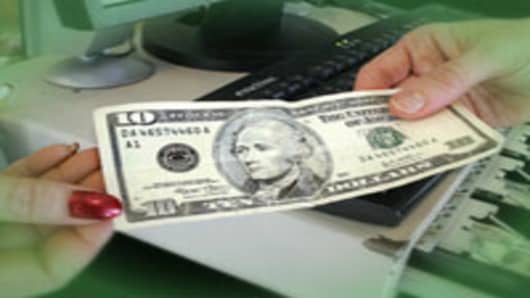U.S. producer prices advanced by a more-than-expected 1.1 percent in March after energy costs jumped, Labor Department data showed, but core inflation at the producer level was more subdued.
The signs of surging food and energy prices at the producer level came as a separate report offered some hope for the downtrodden U.S. factory sector.
The New York Federal Reserve Bank's "Empire State" business conditions index -- a gauge of factory activity that offers one of the freshest readings on U.S. manufacturing -- rose to plus 0.63 in April from minus 22.23 in March. Economists had expected it to edge up to only minus 17.5.
The 1.1 percent increase was the second largest gain in the past 33 years, exceeded only by a 2.6 percent rise last November.
On PPI, economists had forecast producer prices -- a gauge of costs at the farm and factory gate -- would rise 0.6 percent last month from 0.3 percent gain in February.
Core producer prices, which strip out volatile food and energy costs, rose by a much more moderate 0.2 percent as forecast. Finished energy goods were up 2.9 percent and food goods gained 1.2 percent.
On a year-on-year basis, producer prices were up 6.9 percent while core 12-month PPI increased by 2.7 percent -- the largest rise since July 2005.
"There are still a lot of inflation pressures out there," said T.J. Marta, fixed income strategist at Royal Bank of Canada Capital Markets in New York. "The PPI and the Empire State reports are definitely negative for bonds," he said.
U.S. stock index futures advanced on the in-line PPI core reading, but U.S. Treasury debt prices fell on the jump in headline PPI, as investors fretted that it might curb the U.S. Federal Reserve's scope to cut interest rates further.
Soaring energy costs have buoyed producer prices and spilled into broader measures of inflation in a worrying fashion for the Federal Reserve, even as it has slashed interest rates to buffer growth from the housing crisis.
"The Fed has put a lot of tock to the idea that demand will soften... They will bring inflation down. But commodity prices continue to go up," said Keith Hembre, chief economist at FAF Advisors in Minneapolis.
Energy prices, measured on a 12-month basis, are up 20.4 percent, with gasoline up 36.4 percent and heating oil rising 52.0 percent.
During the first quarter of 2008, PPI rose 10.2 percent on a seasonally adjusted annual basis, moderating slightly from the 11.5 percent pace of the previous three months after gains in energy prices slackened a touch, the Labor Department said.
Net Capital Inflows Rose
Separately, net overall capital flows into the U.S. rose to $64.1 billion in February from a revised $35.7 billion in January, the U.S. Treasury Department said on Tuesday.
The amount was enough to cover February's trade deficit of $62.3 billion.
Net long-term capital inflows, excluding swaps, totaled $72.5 billion, compared with a revised $57.1 billion inflow in January. The February net long-term inflow was the largest since May 2007.


